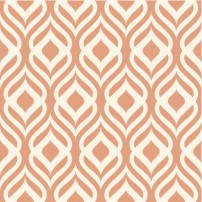If you are new to the world of presentation design, you may want to make yourself familiar with The Gestalt Principles. They are an invaluable guide when selecting and arranging icons and illustrations on a slide. Developed by the Berlin School, they explain that the mind likes to form a “global whole” when viewing objects. In other words, when you see a visual image, your brain naturally tries to tie all of the elements together. If it can’t perform this task easily, it will struggle with the quality of design. Here are the different laws and some tips about using them:
Law of Similarity
What It Means: According to the Law of Similarity, the human mind will automatically group together visual elements that are identical or resemble one another.
How You Can Use It: Similarity can be seen in shape, size, color, or texture, so there are many ways to group items visually without making them identical. The aesthetic advantage of this is to give your image a sense of harmony and connectedness, as in the slide below:
Law of Closure
What It Means: This law explains that people will naturally skip over the gaps and view the object as a unified whole.
How You Can Use It: Thanks to the Law of Closure, when designing your slides you can feel confident about using icons or illustrations that include gaps in the design. This can be helpful when you want to use icons or illustration with a more minimalistic style in your slide designs.
Law of Continuation
What It Means: Continuation describes the way that they eye is compelled to flow from one object to another, especially through lines and curves.
How You Can Use It: Great designers also understand the importance of flow. They value the beauty of lines and curves and appreciate how the eye needs to naturally follow certain visual elements. Capture this movement by incorporating lines that pull the viewer’s eye through the scene, like the example below:
Law of Proximity
What It Means: When items are placed near each other, they are perceived to be in a group. A cluster of dots is a good way to think of this law, or the way that Cheerios group together in a bowl of milk.
How You Can Use It: There are two ways that this law can be used, either by adding a sense of unity to items near each other, or by creating discord through space. This can also give the illusion of shapes or planes, even if the objects do not directly touch.
Law of Figure & Ground
What It Means: The eye can differentiate an object from its background, naturally separating and giving depth to an image.
How You Can Use It: This law can make the foreground image more clear in the viewer’s eye, and can add interest with a textured or enriched background. It also means that you can safely create complexity without the viewer becoming confused as to what they are seeing.
The Law of Symmetry
What It Means: This describes design without any asymmetrical objects. The visual arrangement is completely balanced on all sides, without any missing features.
How You Can Use It: This law will bring stability, consistency, and structure to your image. It also means that the viewer will have an easier time understanding what’s going on; traffic signs and textbooks are examples of places where the Law of Symmetry is used to quickly convey information.
As humans, we like to organize visual elements into groups. And remember, great design captures a “unified whole” since it is how the human brain works. So, the next time you open up PowerPoint, aim to capture a unified look with your choice of color, imagery and icons.






